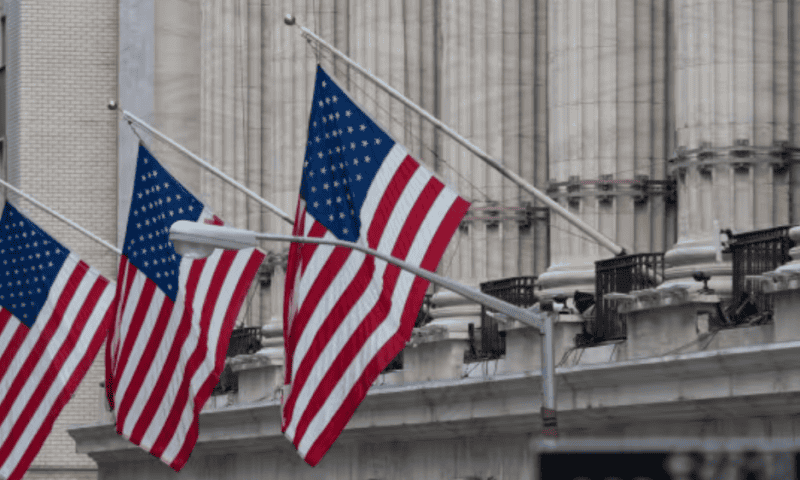Nvidia shares fall after blowout earnings
U.S. stock indexes ended higher Wednesday as investors digested a batch of economic data including October durable-goods orders and consumer-sentiment index ahead of the Thanksgiving holiday.
How stocks traded
The Dow Jones Industrial Average DJIA added 184.74 points or 0.5% to finish at 35,273.03, the highest level since August 14The S&P 500 SPX went up 18.43 points or 0.4% to 4556.62, the highest closing level since Aug.1. The index’s closing value Wednesday is the seventh highest this year.The Nasdaq Composite COMP advanced 65.88 points or 0.5% to end at 14,265.86
Stocks fell modestly on Tuesday, with the S&P 500 snapping a five-day winning streak. The large-cap benchmark is up more than 8% so far in November.
What drove markets
Stocks finished higher on Wednesday ahead of the Thanksgiving holiday Thursday and the annual Black Friday retail shopping spree, with activity decreasing as investors showed reluctance to place fresh bets ahead of a trading break.
U.S. markets are closed Thursday, followed by an abbreviated trading session Friday.
Adding to the caution were results from Nvidia Corp. (NVDA), released after Tuesday’s closing bell, which saw the AI chip maker beat revenue and profit expectations in fiscal third quarter, but caused its shares to drop 2.5% Wednesday.
David Trainer, chief executive officer at New Constructs, said Nvidia’s valuation is “completely disconnected from reality” as “way too much optimism” is priced into its stock.
“While Nvidia reported strong earnings, the stock’s valuation takes ‘priced for perfection’ to an unprecedented new level,” Trainer said in emailed commentary on Wednesday. “We believe the future cash flow expectations baked into Nvidia’s stock are altogether much too high for any reasonable investor to believe the company could achieve them.”
The market’s reaction to Nvidia’s results may also have capped investors’ enthusiasm about the future of artificial intelligence, suggested Stephen Innes, managing partner at SPI Asset Management. “Put another way, specific market sectors, especially mega-tech, are now perceived to be a tad overbought,” he said.
The tech-heavy Nasdaq-100 NDX is up 46.3% so far in 2023, against the S&P 500’s rise of 18.7%, according to FactSet data.
Meanwhile, the minutes from the Federal Reserve’s November policy meeting, released Tuesday, were providing little reason for investors to change their view on bonds.
The yield on the 10-year Treasury BX:TMUBMUSD10Y slipped less than 1 basis point to 4.415%, while the 2-year Treasury yield BX:TMUBMUSD02Y added 2.7 basis points to 4.908%.
In other U.S. economic data, the University of Michigan’s consumer-sentiment survey released Wednesday morning, showed Americans’ inflation expectations for next year rose for a second straight month in November.
Meanwhile, durable goods orders declined by 5.4%, or $16 billion, to $279.4 billion in October, the Census Bureau reported on Wednesday. This reading followed the 4.6% increase recorded in September and came in worse than the market expectation for a contraction of 3.1%, but if airplanes and cars are stripped out, new orders were flat last month, the government said.
The number of Americans who applied for unemployment benefits last week fell to a five-week low of 209,000, indicating the U.S. labor market is still quite sturdy. The report was released a day early because of the Thanksgiving holiday.
Companies in focus
Shares of Deere & Co. DE fell 3.1% on Wednesday after the maker of agricultural, construction and turf equipment provided a downbeat full-year earnings outlook, with its business segments expected to see sales fall more than the industry.Shares of HP Inc. HPQ rose 2.8% after the computing giant reported generally solid results and vowed to introduce its first AI-powered PCs in the second half of 2024.Autodesk Inc. ADSK stock ended Wednesday 6.9% lower after the company’s third-quarter earnings and revenue beat analysts’ estimates, and the software company raised its forecast for the fiscal year ending in January.

